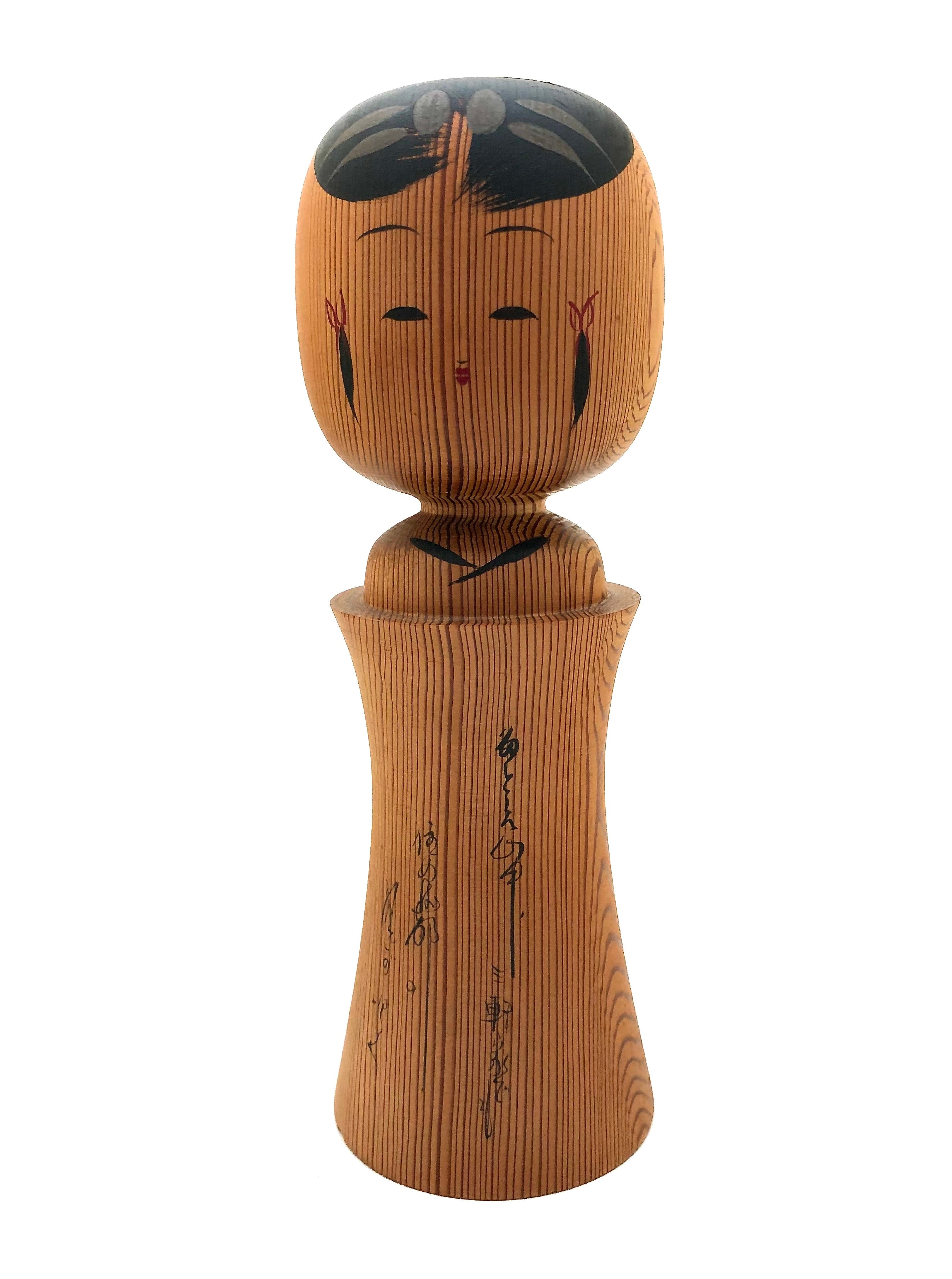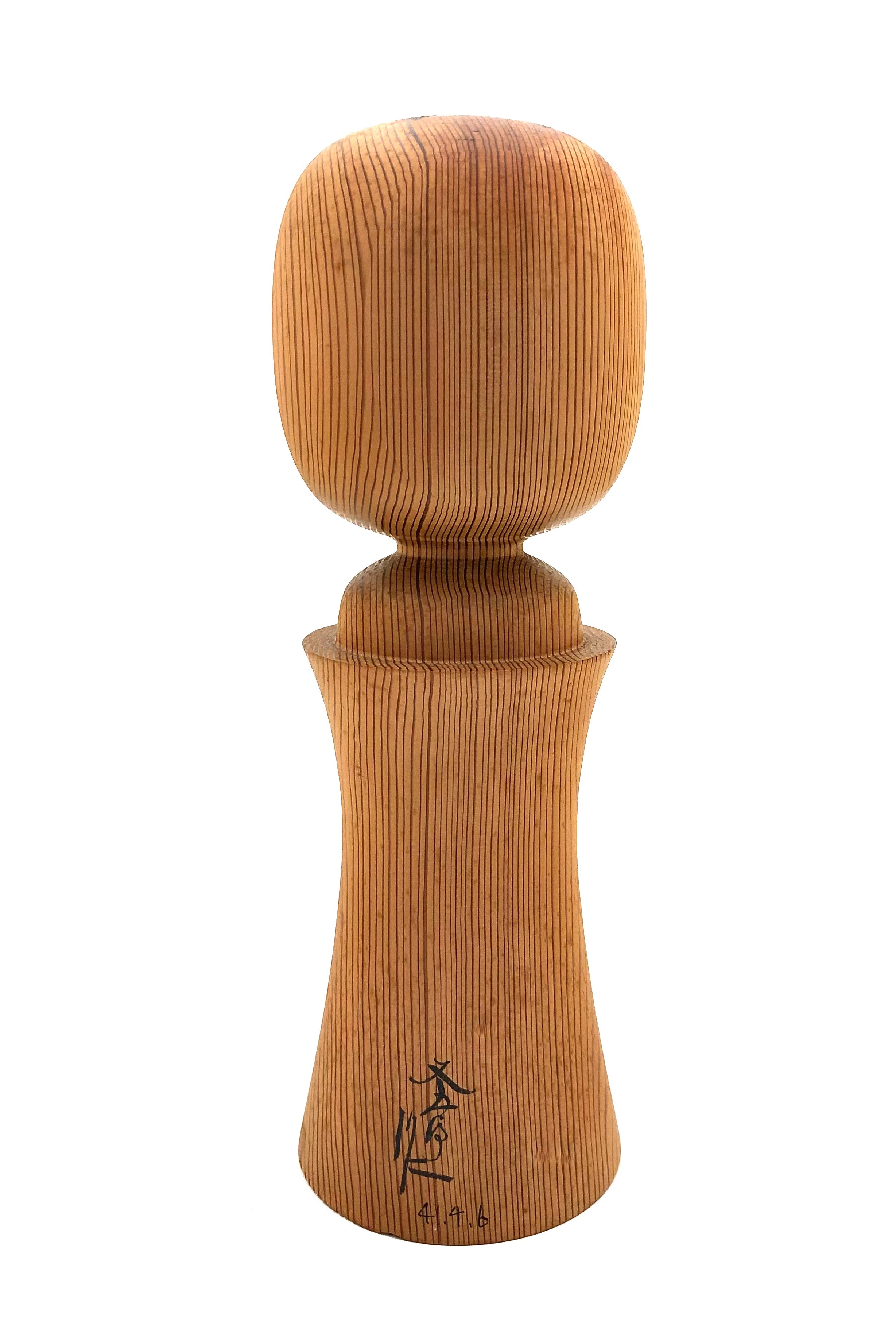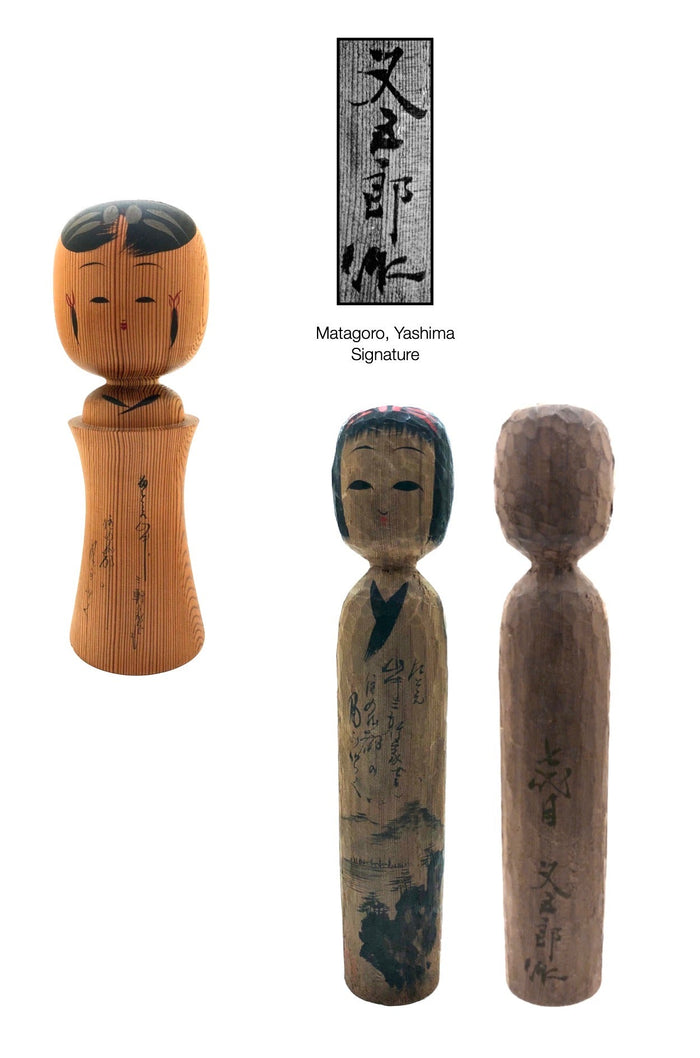

Vintage, Rare Japanese Narugo Style Kokeshi by Matagoro, Yashima
Dimensions: 12-0”h
This large, rare, and beautiful Sosaku Kokeshi is in the Narugo style and turned from one piece harvested Sugi, (Cedar), from the mountains of Nangai-cho in the Akita Prefecture. Like his ancestors, Yashima-san was a highly-skilled carver who enjoyed working with ‘Sugi’, as it was an aromatic, softwood with a very visible grain. The aesthetic difference of this Narugo doll is in the suggestion of the Kimono being simple lines from the carving and the accent on the vertical graining of the wood that runs through the entire length of the doll. Also noted is the slight narrowing at the waist with beveled shoulders growing out of the top of the outer garment.
We understand that this is a Male version of Kokeshi with a suggested decorative hair treatment which is the definitive feature of the head with side fringes, set wide apart, and a single eyelid. A small mouth and cat nose complete the definition of the face. Though his basically plain doll is not as decorative as others of this family of Kokeshi, its unique, flowing form is stronger visually because of its inherent elegance. The piece is titled in script on the front of the doll with the artist's signature on the back.
Condition: Excellent and beautiful condition affording the doll age-old elegance. Beautiful patina with no fading or chipping, unrestored for this style of Kokeshi has the reputation of being the most sophisticated of family dolls. The piece meets all the standards of Traditional Narugo Kokeshi collectibles.

Artisan
Woodworker: Matagoro, Yashima
Biographical History:
Well over two hundred years ago, a Kiji-shi (Woodworker) by the name of Matagoro, who was a seventh-generation Matagoro Kokeshi maker regularly harvested Sugi, (Cedar), in the mountains of Nangai-cho in the Akita Prefecture. He was a highly-skilled carver who enjoyed working with ‘Sugi’, as it was an aromatic, softwood with an evident grain. His most famous Kokeshi picture is Mt. Nangai-cho in Akita Prefecture, which he loved and always included a Haiku expressing his feelings on the front. The Matagoro style doll is often considered a forerunner for the traditional or dento style of Kokeshi, specifically the Kijiyama style Kokeshi, and is thought to have been made before 1950, although the original was made over 200 years ago.
The Kokeshi on the left side of the image is a doll made later in his life when the modern lathe facilitated the refinement of the doll. The aesthetic difference in this later version is that it is a male wearing a garment called a Haori. In this version, he incorporated a slight narrowing at the waist with beveled shoulders growing out of the top of the outer garment with an indication of an undergarment shown at the neck. This male version suggested decorative hair treatment that is a definitive feature of the head, with side fringes, set wide apart and a single eyelid. A small mouth and cat nose complete the definition of the face. Again, as with earlier versions a Haiku in script was incorporated on the front of the doll with the artist's signature on the back.
Collector's note – descriptive qualities, standard characteristics & ornamentation styles:
When he first made Kokeshi of this type, the natural qualities of the wood were too soft to turn on the primitive lathe so most of the work was done through hand carving and chiseling until more modern techniques allowed for shaping them on a lathe as shown in the images. Historically, Matagoro Kokeshi, in the beginning, had a rougher aesthetic finish to the eye and hand. The version on the right, being female suggests a Kimono that was shown by simple linework and a collar of the undergarment indicated at the neck. Finally, he enjoyed incorporating Haiku, (Poems), into his creations.
Explore & Learn More about Woodworker: Matagoro, Yashima